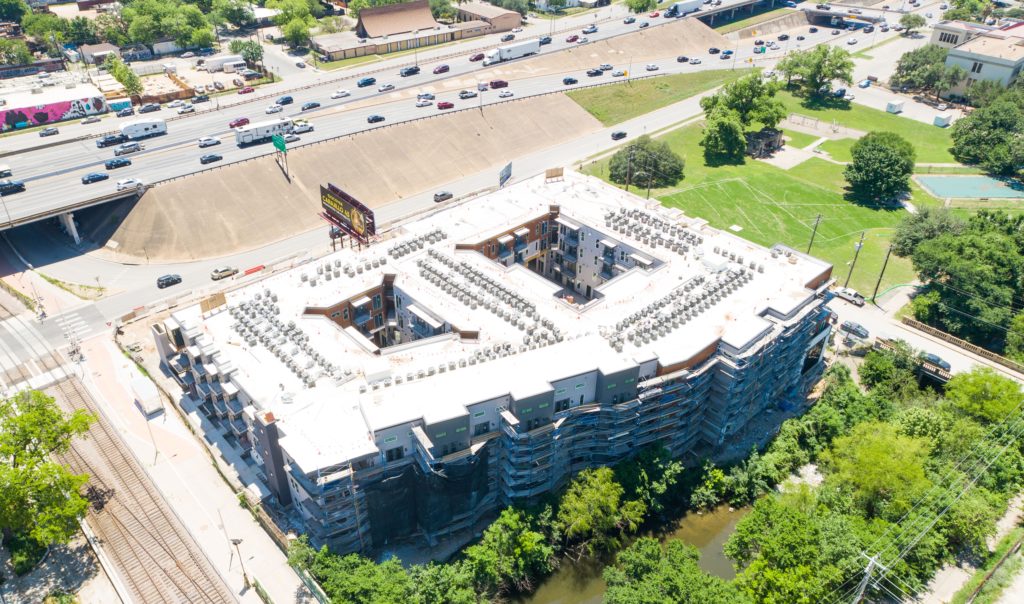We are at the point where very few “simple” urban infill sites are available for multi-family development in most major cities. The sites that remain, typically have some “hurdles” including, unique shapes, encumbrances, and probable environmental impact issues, all of which affect their potential economic viability. That said, given the demand for urban housing, these more challenging development projects are creating opportunities for the best developers, architects, and general contractors to shine.
We recently sat down with the principals of two of the top companies in this field to hear how they creatively address these urban infill situations.
Highland Development – Denver, Colorado
Clay Iman is Development Partner at HDC, one of Denver’s active multi-family developers. In our conversation, he pointed out that given the geometrical complexities and other site-specific characteristics found in today’s urban developments, it is more important than ever to work collaboratively with an exceptional design and consultant team. Clay mentioned that civil engineers are playing an increasingly critical role, since developers rely on them to uncover issues at these complex sites that may not be evident on the surface … and could prove to be deal breakers.
Clay suggested that with some of these projects, unit livability may have to take precedence over under-utilized resident amenities due to space constraints and high cost of construction. And since the units in these projects may need to be smaller, every square inch must add to livability and usability.
He also reminded us that these complex urban infill projects are coming at the same time developers must address other emerging multi-family construction trends, including evolving building codes as well as utility access and capacity matters. “We have always had to figure out solutions to these kinds of issues, but it seems like recently there has been a broader convergence of factors that are making projects even more challenging,” he said.
GFF – Dallas, Texas
Evan Beattie is Chairman & CEO of GFF, an award-winning design firm with projects throughout Texas and around the country. He agreed that the challenges inherent in today’s “no easy dirt” environment are very real. “Anybody can lay out a wrap building on a three- to four-acre lot, or a podium building on a two-acre lot. But these new projects are fun because you have to think outside the box and come up with innovative solutions.”
It all starts with parking, Evan pointed out in our discussion. As these challenging footprints get smaller, parking solutions must be increasingly innovative to allow for maximum density that can unlock a building’s financial potential.
Evan agreed that top quality, collaborative teams are critical. He noted that the project teams must include civil engineers and traffic engineers, as well as zoning attorneys given that more and more projects are requiring entitlement changes. When all these team members have a history of working together, this kind of continuity can instill confidence and minimize mistakes and oversights that could prove costly in the long run.
MPC – The General Contractor’s Perspective
To build on Evan’s point, nearly any general contractor can build a suitable multi-family property on an open-access, unencumbered square or rectangular suburban lot. MPC’s pre-construction and operations team love “working the problem” to overcome any development constraints and deliver the creative urban infill solutions for challenging sites put forward by top developers and architects.
MPC is leveraging its United Project delivery method to ensure early engagement and promote collaboration among the entire project team. This comprehensive and integrated approach addresses the extra level of access planning and the need to account for complex preliminary steps to address encumbrances, utility coordination and potential pricing fluctuations, among others. MPC believes that early engagement with top specialty trade partners, who can address everything from subsurface environmental remediation to relocating/preserving heritage trees growing in the middle of a lot, is critical to delivering a successful project.
The work we have seen in collaboratively working with HDC and GFF is proof that you do not need “easy dirt” to create an exceptional multi-family project.










